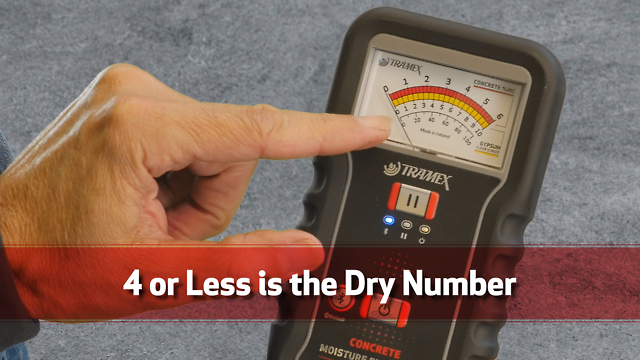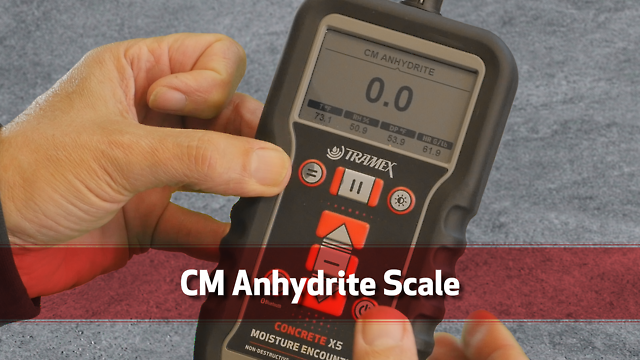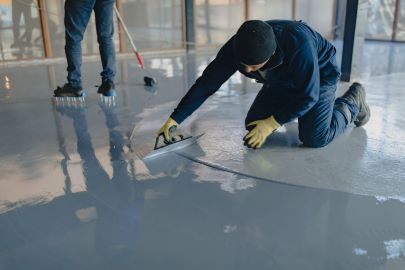How to test Moisture in Gypsum Floors
The Tramex Concrete Moisture Encounter meters, the CME5 and CMEX5, can be used to test gypsum floors to evaluate if they are dry enough for installing floor coverings. Both of them have gypsum scales for moisture measurement.
On the CME5, look for the yellow gypsum scale (0 - 10). A reading of 4 or less indicates a dry number (similar to the dry threshold for concrete).

The CMEX5 offers two gypsum scales:
- Gypsum reference scale (0 - 12): same as CME5, 4 or less for a dry number.

- CM Anhydrite scale (0 - 2.7 Max): 0.5 or less indicates a dry number. Some manufacturers specify this scale, emphasizing the 0.5 for dry number.

The benefit of the Concrete Moisture Encounters is that they provide a larger testing area on the pads, and read about 3/4 inch deep, allowing a more accurate assessment of gypsum dryness for further steps.
Properties and Uses of Gypsum in the Flooring Industry
Gypsum, a soft sulfate mineral, is widely used in the flooring industry for its unique properties. When mixed with water, it hardens into a solid mass, providing stability and durability. Its fire-resistant nature makes it a preferred material for constructing fire-rated walls and ceilings. Additionally, gypsum offers good sound insulation, making it suitable for minimizing noise transmission between floors or rooms.
In flooring applications, gypsum serves several purposes. It is commonly used as an underlayment to create a smooth and leveled surface for various finished flooring materials like tile, hardwood, vinyl, LVP, carpet, etc. Gypsum-based underlayments correct minor imperfections in the subfloor and provide stability for the final floor covering.

Moreover, gypsum can be utilized in radiant floor heating systems, as its thermal conductivity allows for efficient heat distribution. Additionally, it aids in moisture management, especially in areas prone to dampness, such as basements or bathrooms, helping to prevent water damage and mold growth.
Overall, gypsum's properties, including workability, fire resistance, sound insulation, and moisture management, make it a versatile and valuable material in the flooring industry.
This article is presented by Tramex, a global leader in moisture and humidity measurement for more than 50 years. Our engineers and industry specialists work alongside professionals in building inspection, flooring, roofing and water damage restoration to provide accurate and reliable information. With decades of experience and innovation in non-destructive moisture detection, we share practical insights backed by science and real-world experience.
